3M VentureClad™ Heavy Duty Insulation Jacketing Tape 1579GCW-E User guide
- Type
- User guide
This manual is also suitable for
- VentureClad™ Heavy Duty Insulation Jacketing Tape 1579GCW
- VentureClad™ Heavy Duty Insulation Jacketing Tape 1579GCW-WM
- VentureClad™ Heavy Duty Insulation Jacketing Tape 1579GCW-WME
- VentureClad™ Heavy Duty Insulation Jacketing Tape 1579GNA-WME
- VentureClad™ Insulation Jacketing Tape 1577CW
- VentureClad™ Insulation Jacketing Tape 1577CW-E
- VentureClad™ Insulation Jacketing Tape 1577CW-WM
- VentureClad™ Insulation Jacketing Tape 1577CW-WME
- VentureClad™ Jacketing Tape 1578CW
- VentureClad™ Jacketing Tape 1578CW-E

3M
™
VentureClad
™
Insulation Jacketing Products
Recommended Installation and Repair Guide
Pipe and Equipment Insulation Jacketed with Factory
and Field Installed 3M
™
VentureClad
™
Products
Revision 1
7/20/2017

Page
1 of 48
3M
™
VentureClad
™
Insulation Jacketing Products
Recommended Installation and Repair Guidelines, Revision 1
Table of Contents
1. Scope ................................................................................................................................. Page 2
2. Notes ................................................................................................................................. Page 3
3. Installing straight sections of preformed pipe insulation
that has been factory‐jacketed ........................................................................................ Page 4
4. Field installation of 3M
™
VentureClad
™
Jacket over insulated straight pipe ............. Page 14
5. Installing factory-jacketed fittings ................................................................................. Page 17
6. Installing factory‐fabricated or field‐fabricated valve insulation .............................. Page 30
7. Using 3M
™
VentureClad
™
to jacket an insulated, small diameter storage tank .......... Page 33
8. Using insulation boards, factory jacketed with 3M
™
VentureClad
™
Product, to
insulate a large diameter horizontal storage tank operating
at temperatures from ambient up to 350°F ..................................................................Page 34
9. Using 3M
™
VentureClad
™
Insulation Jacketing Product
to jacket an insulated heat exchanger ..........................................................................Page 38
10. Repair of punctures and tears of the 3M
™
VentureClad
™
Product ..............................Page 39
11. Using 3M
™
VentureClad
™
Product to jacket an insulated pipe
that penetrates an exterior wall ..................................................................................... Page 41
Product Key
1577CW
Smooth silver aluminum with adhesive
1577CW-E
Embossed silver aluminum with adhesive
1577NA
Smooth silver aluminum without adhesive
1577CW-CM/WM/BM
Smooth silver aluminum, white, or black with adhesive and a membrane
1579GCW
Heavy duty, smooth silver aluminum with adhesive
1579GCW-E
Heavy duty, embossed silver aluminum with adhesive
1579GNA
Heavy duty, smooth silver aluminum without adhesive
1579GCW-CM/WM
Smooth silver aluminum and white with adhesive and a membrane

Page
2 of 48
3M
™
VentureClad
™
Insulation Jacketing Products
Recommended Installation and Repair Guidelines, Revision 1
1. Scope
a. Using 3M
™
VentureClad
™
products 1577CW, 1579GCW, and 1579GNA, the following
recommended installation guidelines apply when installing these materials to rigid or semi‐
rigid pipe insulation materials. It will apply to either factory or field jacketing. “CW” products
have a pressure sensitive adhesive, covered with a release liner, over their entire inside
surface. “NA” products have no adhesive.
b. 1577CW, 1579GCW, and 1579GNA are suitable for both indoor and outdoor applications but
not for below ground, buried applications. It is recommended that either 1577CW pressure
sensitive tape be used for sealing all 1579GCW and 1579GNA seams, whether they are lap or
butt joints, or the more flexible 1578CW tape. The 1577CW tape may be used for both
securement and sealing the insulation sections/segments against both water and water vapor
intrusion. The 1578CW tape is only to be used for sealing the insulation sections/segments
against water and water vapor intrusion in recommended locations. 4-inch (100mm) wide
seaming tape should be considered the standard if not recommended otherwise.
c. Although the figures within this manual show the 3M
™
VentureClad
™
and 3M
™
Venture Tape
™
products with an embossed and smooth aluminum finish, they are also available in
other colors.
d. Insulation materials for which these procedures are applicable include, but are not
necessarily limited to, the following: polystyrene, polyisocyanurate, phenolic foam, cellular
glass, flexible elastomeric, polyolefin, faced or unfaced fiberglass, mineral wool, molded
expanded perlite, flexible aerogel, and calcium silicate.
e. These procedures assume the piping will operate at below ambient temperatures and
therefore include sealing against water vapor intrusion. For below ambient applications,
where condensation control is required, it may be beneficial to select a 3M
™
VentureClad
™
product with a high emittance (i.e., > 0.5) to reduce the insulation thickness required to
prevent surface condensation. Since all the 3M
™
VentureClad
™
products covered by this
manual will have a low water vapor permeance, no additional vapor retarder needs to be
used so long as the 3M
™
VentureClad
™
is sealed tightly at all locations.
f. The maximum use temperature of the Natural Aluminum 3M
™
VentureClad
™
products is
300°F (149°C). The maximum use of the Membrane 3M
™
VentureClad
™
products is 248°F
(120°C). The pipe service temperature itself may be much higher on above ambient service.
In those cases, the exposure temperature of the 3M
™
VentureClad
™
should be controlled to
below 300°F by the design and installation of the insulation system.
g. Proper adhesion of the materials is paramount in the long term success of the jacketing
and the tape products. It is recommended that for both the 3M
™
VentureClad
™
and the
3M
™
Venture Tape
™
, the installer keep the adherent surfaces free of dust, dirt, and water.
It is recommended that the applicator is to seal immediately once this adhesive is exposed by
removing the release liner.

Page
3 of 48
3M
™
VentureClad
™
Insulation Jacketing Products
Recommended Installation and Repair Guidelines, Revision 1
2. Notes that apply to the installation of 3M
™
VentureClad
™
jacketing on insulated pipes:
Note 1: The guidelines in this manual do not purport to address all engineering issues associated with the
use of 3M
™
VentureClad
™
jacketing products and pipe insulation system design. It is the responsibility of
the facility owner to have (1) qualified structural engineers perform calculations, as required, to make
certain that the securement is sufficient, accounting for the weight of the insulation system; (2) qualified
mechanical engineers determine the insulation meets the required thermal requirements and (3) qualified
corrosion engineers to specify type and thicknesses of insulation materials and coatings to protect the
metal surfaces from corrosion under insulation.
Note 2: Users of this manual should use only trained, skilled, and experienced insulation workers. The
guidelines included in this manual are not of sufficient detail to advise the installer of all techniques
required to install insulation systems correctly.
Note 3: The guidelines in this manual do not purport to address all of the safety concerns, if any,
associated with its use. It is the responsibility of the user of this manual to establish appropriate safety
and health practices and determine the applicability of regulatory limitations prior to use.
Note 4: 3M strongly recommends the facility owner/operator to conduct regular pipe and equipment
insulation system maintenance. Damaged insulation systems can perform poorly and allow ingress of
water from rain or melting snow or, on below ambient systems, water vapor intrusion with subsequent
condensation. Wet insulation will not perform thermally on a par with that provided by the insulation
material’s manufacturer; further, it can lead to corrosion under insulation. The best prevention of
these problems is a proactive insulation system maintenance program that includes sealing of the
3M
™
VentureClad
™
jacketing.
Note 5: 3M generally recommends the use of 3M
™
Venture Tape
™
1577CW as a seaming tape with both
3M
™
VentureClad
™
1577CW and 1579GCW products. In situations where extremely tight corners are
required, the more flexible, 3M
™
Venture Tape
™
1578CW product is acceptable.

Page
4 of 48
3M
™
VentureClad
™
Insulation Jacketing Products
Recommended Installation and Repair Guidelines, Revision 1
3.
Installing straight sections of pre‐formed pipe insulation that has been
factory‐jacketed:
On pipe sizes up through about 16-inch (400mm) NPS, the pipe insulation is slit into two
pieces that hinge on the attached 3M
™
VentureClad
™
Insulation Jacketing. The sections
are normally 36 inches (900mm) long, but may be cut shorter to accommodate field
installation when required. See Figures 1a and 1b.
Figures 1a and 1b show a section of factory jacketed, preformed pipe insulation, using
3M
™
VentureClad
™
as the jacket, being prepared for installation on a pipe.
a. Place the pipe insulation over top of the straight section of pipe to be insulated, as shown in
Figure 2. For best securement of the insulation around the pipe, it is recommended that the
longitudinal lap seal be at least 3 inches (75mm) wide.
Figure 2 shows the preformed pipe insulation, factory jacketed with 3M
™
VentureClad
™
, being installed on a pipe.
b. Adjust the pipe insulation, as shown in Figure 3, so the lap joint is either at 2 o’clock or
at 10 o’clock. If recommended by the manufacturer of the insulation material, the two
half‐sections can be adhered to one another, during this step, using their recommended
adhesive and application technique.
Fig. 1a
Fig. 1b
Fig. 2
3M
™
VentureClad
™
3M
™
VentureClad
™

Page
5 of 48
3M
™
VentureClad
™
Insulation Jacketing Products
Recommended Installation and Repair Guidelines, Revision 1
Figure 3 shows the preformed section of pipe insulation, with factory applied
3M
™
VentureClad
™
as the jacket, being closed around the pipe.
c. Peel the release liner from the 3M
™
VentureClad
™
lap, as shown in Figures 4, 5, and 6.
Next, press and seal the lap against the insulation and jacket, using the “squeegee”
provided by 3M or equal. To accomplish a tight seal all along the entire length of that
section of pipe insulation, rub the lap with the squeegee to remove all air and fish-mouth
areas. When using the thicker 1579GCW as the jacket, it is recommended that an
additional 4-inch (100mm) wide strip of 1577CW, cut to a length equal to the pipe
insulation section (36 inches (900mm) or less) be applied over the lap joint, as shown in
Figure 7.
Figure 4 shows the section of preformed pipe insulation, factory jacketed with
3M
™
VentureClad
™
, having the release liner peeled to enable the sealing of the lap joint.
Fig. 3
Fig. 4
3M
™
VentureClad
™

Page
6 of 48
3M
™
VentureClad
™
Insulation Jacketing Products
Recommended Installation and Repair Guidelines, Revision 1
Figure 5 shows the section of preformed pipe insulation, factory jacketed with 3M
™
VentureClad
™
, fully installed on the pipe.
Figure 6 is the same as Figure 5 except that the pipe insulation has been rotated, in the view, to show
the sealed lap joint. Note that the lap joint should be at either 2 o’clock or 10 o’clock so it sheds water.
Figure 7 shows the application of 1577CW seaming tape over the same lap joint shown in Figure 6. This
application is recommended when using the thicker 3M
™
VentureClad
™
1579GCW as the insulation jacket,
but is unnecessary when using the thinner 3M
™
VentureClad
™
1577CW.
Fig. 5
Fig. 6
Fig. 7
Removing release liner
from 3M
™
Venture Tape
™
Applying 3M
™
Venture Tape
™

Page
7 of 48
3M
™
VentureClad
™
Insulation Jacketing Products
Recommended Installation and Repair Guidelines, Revision 1
d. Butt the adjacent section of insulation tightly against the first section. After installation of the
adjacent section of pipe insulation, take a piece of matching 4-inch (400mm) wide
1577CW seaming tape, cut to the length of the insulation circumference + 3 inches
(75mm). Be certain that the tape is centered on the butt joint. Pull the release liner from
it, and adhere the tape over the butt joint, making certain that the tape is centered
on the butt joint. Use a “squeegee” to assure that the tape is well sealed to both the
3M
™
VentureClad
™
and to itself. See Figure 8a.
e.
If required by the insulation specification, stainless steel insulation bands can be
installed at
this point to secure the insulation section. As an alternative and if permitted by the
insulation specification, 4-inch (100mm) wide 1577CW seaming tape, cut to the length
of the
pipe insulation circumference + 3 inches (75mm), can also be used, in place of metal bands.
Figure 8a shows an insulated pipe with 3M
™
VentureClad
™
and an exposed butt joint. This can accommodate
either a taped, conventional butt joint (shown in Figures 8b and 8c), or it can be sealed with another sheet of
3M
™
VentureClad
™
as an expansion joint (shown in Figures 8d–8g).
Fig. 8a
3M
™
VentureClad
™
and Exposed Butt Joint

Page
8 of 48
3M
™
VentureClad
™
Insulation Jacketing Products
Recommended Installation and Repair Guidelines, Revision 1
Figure 8b shows the use of a strip of 4-inch (100mm) wide 1577CW seaming tape in forming a standard sealed butt joint
between two adjacent pipe insulation sections covered with 3M
™
VentureClad
™
(either 1577CW or 1579GCW). The
metal bands are optional. Note that this assembly does not include an expansion joint capability. See the following
Figures 8d–8f for installation of an expansion joint.
Figure 8c shows a standard taped, sealed 3M
™
VentureClad
™
butt joint with no expansion capability.
This makes use of a 4-inch (100mm) wide strip of 1577CW seaming tape.
Fig. 8b
Fig. 8c
4" wide 1577CW 3M
™
VentureClad
™

Page
9 of 48
3M
™
VentureClad
™
Insulation Jacketing Products
Recommended Installation and Repair Guidelines, Revision 1
Figure 8d shows Step 1 in preparing a sheet of 3M
™
VentureClad
™
especially for an expansion joint.
Figure 8e shows Step 2 in installing a 3M
™
VentureClad
™
expansion joint. Note that the sealant should be a non-curing,
non-hardening type so as to allow for movement between the outer and the inner sheets of 3M
™
VentureClad
™
at the
butt joint.
Fig. 8d
Fig. 8e
3M
™
VentureClad
™
3M
™
VentureClad
™

Page
10 of 48
3M
™
VentureClad
™
Insulation Jacketing Products
Recommended Installation and Repair Guidelines, Revision 1
Figure 8f shows Step 3 in installing a 3M
™
VentureClad
™
expansion joint.
Figure 8g shows the final Step 4 in completing a 3M
™
VentureClad
™
expansion joint, namely, using a squeegee to
smooth out the 3M
™
VentureClad
™
and making certain that it is well sealed.
Fig. 8f
Fig. 8g
Step 3: Wrap 3M
™
VentureClad
™
around so the top overlaps the bottom underside
Installing an expansion joint on insulated pipe jacketed with 3M
™
VentureClad
™
Step 4: Use squeegee to press and seal 3M
™
VentureClad
™
onto surface
Installing an expansion joint on insulated pipe jacketed with 3M
™
VentureClad
™

Page
11 of 48
3M
™
VentureClad
™
Insulation Jacketing Products
Recommended Installation and Repair Guidelines, Revision 1
f. For larger pipe sizes, normally > 16 inch (400mm) NPS, the pipe insulation is handled, and
installed, as separate half‐sections. See Figure 9. If recommended by the manufacturer
of the insulation material, the two half‐sections can be adhered to one another, during
this step, using their recommended adhesive and application technique. This type of
adhering is often referred to as “buttering the joints”.
Figure 9 shows a larger size pipe, normally with a diameter > 16 inches (400mm), being insulated with two separate
half sections of preformed pipe insulation, each of which was factory jacketed with 3M
™
VentureClad
™
.
Fig. 9
3M
™
VentureClad
™
3M
™
VentureClad
™

Page
12 of 48
3M
™
VentureClad
™
Insulation Jacketing Products
Recommended Installation and Repair Guidelines, Revision 1
g. Bring the half‐sections together around the pipe. Remove the release liner, from the lap
joint facing on one of the lap joints, to enable the 3M
™
VentureClad
™
lap to adhere to the
3M
™
VentureClad
™
on the other half section, as shown on Figure 10. Do the same with the
second lap joint. Orient the two lap joints at 6 o’clock and 12 o’clock. As with smaller pipe
insulation sections, it is recommended that these laps be a minimum of 3 inches (75mm)
wide and be pressed firmly with a “squeegee” to assure good adhesion and tightly
sealed
joints over the entire length of the lap.
Figure 10 shows the two release liners, one on each half section of preformed pipe insulation, being peeled from the lap
joint of the 3M
™
VentureClad
™
Jacket.
h. Complete the installation of the two half sections, as shown on Figure 11. When using the
thicker 1579GCW, it is recommended to also apply a strip of 1577CW tape over each lap
joint, as previously shown in Figure 7.
Fig. 10

Page
13 of 48
3M
™
VentureClad
™
Insulation Jacketing Products
Recommended Installation and Repair Guidelines, Revision 1
Figure 11 shows the completed installation of preformed pipe insulation, factory jacketed with 3M
™
VentureClad
™
.
i. Continue installing insulation sections until you reach a fitting, such as an elbow, tee,
or valve.
j. To secure the insulation to the pipe and if required by either the insulation manufacturer or
the specification, install either stainless steel bands or 4-inch (100mm) wide 1577CW, at
periodic axial distances from one another. Many lower density pipe insulation materials
used for below ambient service, such as fiberglass, mineral wool, phenolic foam,
polystyrene, and polyisocyanurate, do not normally require additional support from metal
bands (Note: 3M is not making a recommendation about whether metal bands are
necessary since this is an engineering issue that is project specific). When additional
securement is required and if allowed by the specification, 4-inch (100mm) wide 1577CW,
cut to a length of the insulation circumference + 3 inches (75mm) or more, can be used in
place of metal bands.
k.
Vapor Dams / Stops: For below ambient applications, apply a vapor barrier mastic, per
either the
insulation manufacturer’s recommendation or the project specification, to form
“vapor dams” at every elbow. Note that the mastic must first be applied to the pipe
surface,
for a distance of 2 inches (50mm) along the pipe, then to the inside surfaces of
both of the elbow
insulation half sections, then to the butt end of the elbow insulation
section to assure it seals properly and continuously. It is recommended that vapor dams be
installed at a distance not to exceed 15 to 20 lineal feet (4.6m–6m) and also be installed
at fittings.
Fig. 11
Installed 3M
™
VentureClad
™
and insulation on a large
diameter pipe

Page
14 of 48
3M
™
VentureClad
™
Insulation Jacketing Products
Recommended Installation and Repair Guidelines, Revision 1
4.
Field installation of 3M
™
VentureClad
™
jacket over insulated straight pipe:
a. Step 1: Prepare sheets of 3M
™
VentureClad
™
CW cut to appropriate length. Be certain that
the straight pipe insulation material has been installed so as not to exceed its maximum use
temperature. The circumferential length of each 3M
™
VentureClad
™
sheet should be equal
to the pipe insulation circumference + 3 inches (75mm) or more to account for the overlap
needed at the lap joint. When multiple sheets are used to cover long linear runs of pipe,
these also should have a minimum 3-inch (75mm) overlap.
Figure 12 shows two rectangular sheets of 3M
™
VentureClad
™
, one being the type CW (i.e., with pressure sensitive adhesive
and covered with a release liner) and the other being the type NA (i.e., with no adhesive).
b.
Step 2: Peel the release liner from the first sheet of 3M
™
VentureClad
™
CW (by about 3
inches at a time) and use a
squeegee to press the material onto the insulation. See Figure
12. Repeat this step until the entire piece is overlapped and bonded directly to the
insulation, as shown in Figure 13. Carefully bring the sheet around the pipe to prevent
wrinkling and to make certain the sheet wraps around and laps over itself.
See Figure 13.
c. Step 3: For the thicker 1579GCW tape or 1579GNA products, apply a strip of 4-inch
(100mm) wide strip of 1577CW tape over each circumferential butt joint, and then over
each longitudinal lap joint. For product 1577CW, additional tape is unnecessary on the lap
joints unless required by the specification.
Fig. 12
Field application of 3M
™
VentureClad
™
Jacket over installed pipe insulation
Two types of 3M
™
VentureClad
™
1. Fully adhesive 3M
™
VentureClad
™
(type CW)
2. 3M
™
VentureClad
™
(type NA)

Page
15 of 48
3M
™
VentureClad
™
Insulation Jacketing Products
Recommended Installation and Repair Guidelines, Revision 1
Figure 13 shows the installation of 3M
™
VentureClad
™
CW onto an insulated straight pipe. Note that the recommendation is
for the installer to peel back about 3 inches (75mm) of the release liner at a time, adhere that 3 inches (75mm) of
3M
™
VentureClad
™
CW, then do another 3 inches (75mm). This will help assure the installer achieves a smooth surface.
Figure 14 shows 3M
™
VentureClad
™
NA being installed onto a straight section of pipe that has already been
insulated with unjacketed pipe insulation. This type of 3M
™
VentureClad
™
will have to be secured using a 4-inch
(100mm) band of 1577CW.
Fig. 13
Fig. 14
1. Fully adhesive 3M
™
VentureClad
™
(type CW)
2. Adhesive end strip on 3M
™
VentureClad
™
(type NA)
Field application of 3M
™
VentureClad
™
Jacket over installed pipe insulation
Field application of 3M
™
VentureClad
™
Jacket over installed pipe insulation
Pull over and seal on
3M
™
VentureClad
™

Page
16 of 48
3M
™
VentureClad
™
Insulation Jacketing Products
Recommended Installation and Repair Guidelines, Revision 1
d.
Apply another sheet of 3M
™
VentureClad
™
in the same manner, adjacent to the first. The
sheets do not have to overlap one another, but should be within ½ inch (12mm) of one
another. Then, apply a strip of 4-inch (100mm) wide 1577CW to the circumferential joint.
On small bore pipe (i.e., < 4 ½ inch (115mm) NPS), it is recommended that 1579GNA be
used to cover the insulation and that a minimum 2-inch (50mm) wide 1577CW or 1578CW
be used on all longitudinal seams and mitered joints and that 4 inch (100mm) wide 1577CW
or 1578CW be used on all butt strip joints.
e.
Continue this sequence until you reach a fitting or other obstruction.
See Figure 15.
f. For above ambient applications on horizontal insulated pipe, the insulator may drill an
approximately 1/4" (6mm) drain hole at the 6 o'clock position, to provide drainage, unless
there is no clearance underneath the piping.
Figure 15 shows a strip of 1577CW being wrapped around a circumferential joint after having had the release liner peeled
back. This drawing can apply to all four types of 3M
™
VentureClad
™
discussed in this manual: 1577CW, 1577NA,
1579GCW, and 1579GNA.
Fig. 15
Field application of 3M
™
VentureClad
™
Jacket over installed pipe insulation
3M
™
Venture Tape
™
Remove release liner from
3M
™
Venture Tape
™
3M
™
VentureClad
™

Page
17 of 48
3M
™
VentureClad
™
Insulation Jacketing Products
Recommended Installation and Repair Guidelines, Revision 1
Figure 16 shows a strip of 1577CW having been adhered to a longitudinal, lap joint. This drawing can apply 1579GCW and
1579GNA. When using the 1577CW, the longitudinal lap strip is not necessary but may be applied for tighter sealing and
longevity of the jacket system.
5. Installing Factory-jacketed Fittings: Elbow Insulation fabricated from preformed pipe
insulation sections that have been factory‐jacketed with 3M
™
VentureClad
™
.
a. Mitered elbows
i. These elbows are to be fabricated, as two half sections, in a shop, following patterns in
the National Commercial & Industrial Insulation Standards, 2011, Seventh Edition
(referred to from here on as “the MICA Manual”), Table 12.20, for both short and long
radius elbows. For example, an 8 x 2, LR, 90 degree elbow would be made from eight
identical, mitered sections, each with a throat side dimension of 1‐1/8 inches (28mm)
and a heel side dimension of 3‐5/8 inches (90mm).
ii. The straight pipe insulation sections, from which the miters are to be cut, should first be
jacketed with 1577CW or 1579GCW.
iii. Fabrication: after all the miters have been cut from the straight pipe insulation sections
jacketed with 3M
™
VentureClad
™
, each half‐“clam shell” is to be assembled. This is done
by taping each ½ miter to the adjacent ½ miter using 1-inch (25mm) wide 1577CW or
1578CW, making certain that the tape is pressed firmly using a “squeegee”, against the
jacketing on the miters to assure a tight seal. If recommended by the pipe insulation
material manufacturer, the insulation ½ miter slices can be glued to one another in the
process using their recommended adhesive and application technique. See Figure 17.
Fig. 16
3M
™
Venture Tape
™
Remove release liner from
3M
™
Venture Tape
™
Field application of 3M
™
VentureClad
™
Jacket over installed pipe insulation
3M
™
VentureClad
™

Page
18 of 48
3M
™
VentureClad
™
Insulation Jacketing Products
Recommended Installation and Repair Guidelines, Revision 1
Figure 17 shows two half sections of a pipe elbow insulation fabricated from factory jacketed insulation.
Installation — In the field, bring the two “clam shell” sections together around the elbow,
as shown in Figure 18.
Figure 18 two half sections of 90 degree pipe insulation sections, being installed onto the elbow.
Fig. 17
Fig. 18

Page
19 of 48
3M
™
VentureClad
™
Insulation Jacketing Products
Recommended Installation and Repair Guidelines, Revision 1
iv. Using two strips of 1577CW or 1578CW tape, of appropriate width for the size of the
elbow being jacketed, with one cut to length of the “throat” and the other to the length
of the “heel”, then attach the elbow insulation “clamshell”
sections to one another by
installing the strips of 3M
™
Venture Tape
™
. See Figure 19. Be
certain to press the tape
strips firmly, using a squeegee to assure both
a strong
attachment and a tight vapor seal.
If recommended by the insulation manufacturer, the insulation comprising the two
“clamshells” can be adhered to one another, in the process, using their recommended
adhesive and application technique.
Figure 19 shows a section of factory
‐
jacketed elbow being installed onto a piping system.
Fig. 19
Page is loading ...
Page is loading ...
Page is loading ...
Page is loading ...
Page is loading ...
Page is loading ...
Page is loading ...
Page is loading ...
Page is loading ...
Page is loading ...
Page is loading ...
Page is loading ...
Page is loading ...
Page is loading ...
Page is loading ...
Page is loading ...
Page is loading ...
Page is loading ...
Page is loading ...
Page is loading ...
Page is loading ...
Page is loading ...
Page is loading ...
Page is loading ...
Page is loading ...
Page is loading ...
Page is loading ...
Page is loading ...
Page is loading ...
-
 1
1
-
 2
2
-
 3
3
-
 4
4
-
 5
5
-
 6
6
-
 7
7
-
 8
8
-
 9
9
-
 10
10
-
 11
11
-
 12
12
-
 13
13
-
 14
14
-
 15
15
-
 16
16
-
 17
17
-
 18
18
-
 19
19
-
 20
20
-
 21
21
-
 22
22
-
 23
23
-
 24
24
-
 25
25
-
 26
26
-
 27
27
-
 28
28
-
 29
29
-
 30
30
-
 31
31
-
 32
32
-
 33
33
-
 34
34
-
 35
35
-
 36
36
-
 37
37
-
 38
38
-
 39
39
-
 40
40
-
 41
41
-
 42
42
-
 43
43
-
 44
44
-
 45
45
-
 46
46
-
 47
47
-
 48
48
-
 49
49
3M VentureClad™ Heavy Duty Insulation Jacketing Tape 1579GCW-E User guide
- Type
- User guide
- This manual is also suitable for
-
- VentureClad™ Heavy Duty Insulation Jacketing Tape 1579GCW
- VentureClad™ Heavy Duty Insulation Jacketing Tape 1579GCW-WM
- VentureClad™ Heavy Duty Insulation Jacketing Tape 1579GCW-WME
- VentureClad™ Heavy Duty Insulation Jacketing Tape 1579GNA-WME
- VentureClad™ Insulation Jacketing Tape 1577CW
- VentureClad™ Insulation Jacketing Tape 1577CW-E
- VentureClad™ Insulation Jacketing Tape 1577CW-WM
- VentureClad™ Insulation Jacketing Tape 1577CW-WME
- VentureClad™ Jacketing Tape 1578CW
- VentureClad™ Jacketing Tape 1578CW-E
Ask a question and I''ll find the answer in the document
Finding information in a document is now easier with AI
Related papers
-
3M VentureClad™ Insulation Jacketing Tape 1577CW-WME User guide
-
3M Modular Tap Splice Kit 5815-T, 1/Case Operating instructions
-
3M Cold Shrink Splicing Kit QS2001B, Tape, Wire, Unishield, 15 kV, Standard, 1/case Operating instructions
-
3M Scotch® Filament Tape 880MSR User guide
-
3M Cold Shrink QS-III Splice Kit 5526A-1000-CU, 1000 kcmil, Insulation O.D. Range 1.24"-2.07" (31,5-52,6 mm), 1 per case Operating instructions
-
3M Cold Shrink QS-III Splice Kit 5536A-1000-AL, Longitudinally Corrugated, 35 kV, 1000 kcmil, 1/case Operating instructions
-
3M Cold Shrink QS-III Splice Kit 5515A-750-CU, 15 kV, Standard, 1/case Operating instructions
-
3M Cold Shrink QS-III Joint Kit 5488A Series Operating instructions
-
3M Cold Shrink QS-III Splice Kit 5524A-1-AL, Tape, Wire, Unishield, 25/28 kV, Standard, 1 per case Operating instructions
-
3M Cold Shrink QS-III Splice Kit 5525A-500-CU, Tape, Wire, Unishield, 25/28 kV, Standard, 1 per case Operating instructions
Other documents
-
CALHOME SDH-WDN-SS-60 User manual
-
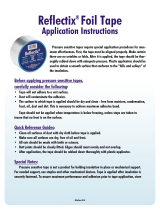 Reflectix FT210 Installation guide
Reflectix FT210 Installation guide
-
K-Flex 6RXLO100158 Installation guide
-
Holdrite HF50-20S Installation guide
-
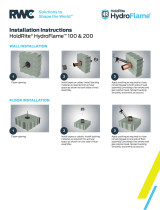 Holdrite HF100-30C Installation guide
Holdrite HF100-30C Installation guide
-
YBS Insulation ThermaWrap Operating instructions
-
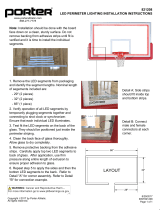 Porter BACKBOARD PERIMETER LED KITS Operating instructions
Porter BACKBOARD PERIMETER LED KITS Operating instructions
-
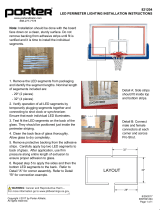 Porter BACKBOARD PERIMETER LED KITS Operating instructions
Porter BACKBOARD PERIMETER LED KITS Operating instructions
-
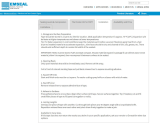 Emseal MSR252504 Installation guide
Emseal MSR252504 Installation guide
-
Quietflex Manufacturing SS0580 Installation guide





















































